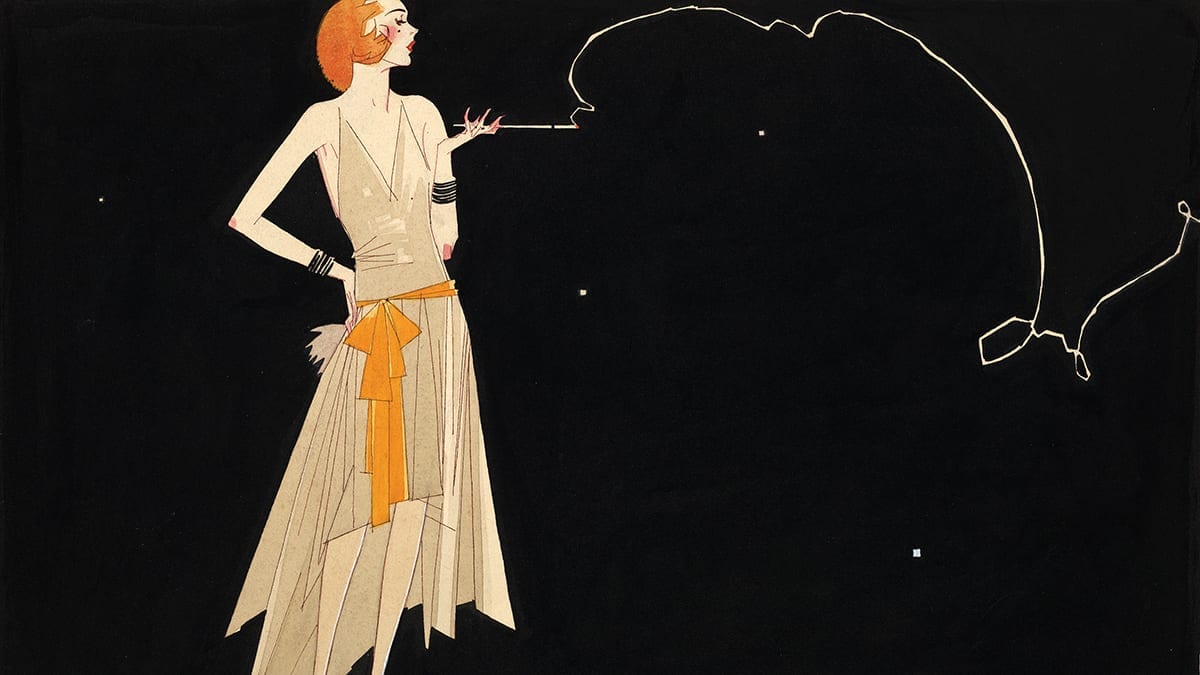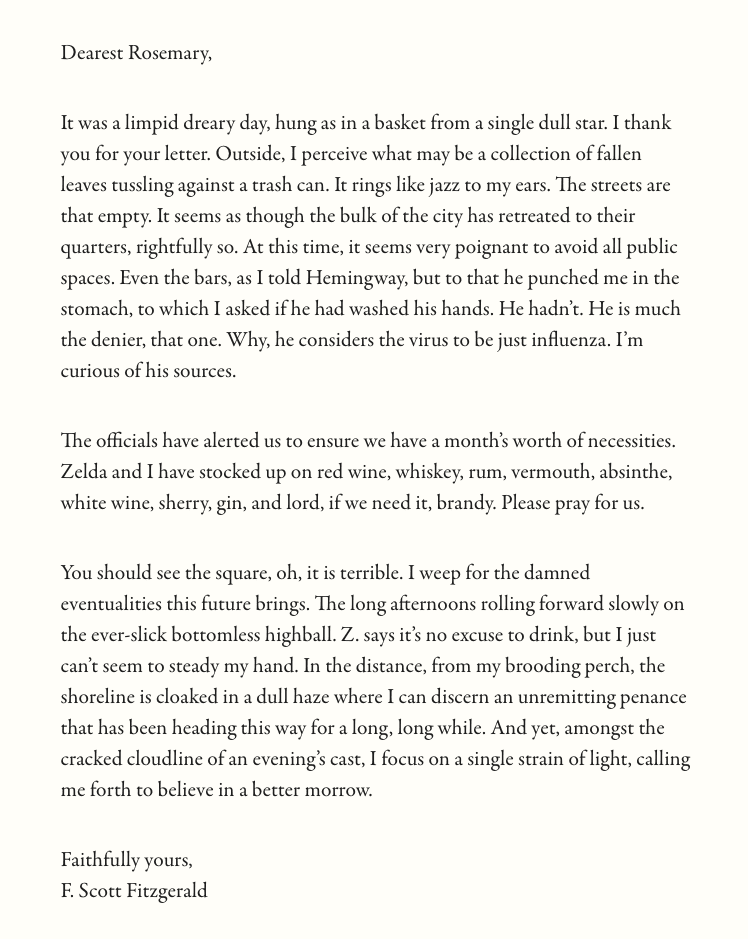Roaring into the 2020s
with F. Scott Fitzgerald

Back in March, there was a strange feeling of déjà vu when an eerily prescient letter written by F. Scott Fitgerald went viral online.
• • •
(Header photo: Wikimedia Commons)
In it, Fitzgerald described his experience of being quarantined in the south of France during an outbreak of the Spanish Flu in a way that was highly relatable to many people’s current reality under the coronavirus lockdown.
People eventually cottoned on to the fact that the letter was a parody written by Nick Farriella for the San Francisco-based humour website McSweeney’s, and it was never intended to be taken seriously.
Authentic or otherwise, the letter’s popularity perfectly illustrates the enduring cut-through of Fitzgerald’s highly-recognisable, and apparently imitable, style. Farriella captures the tone and poignancy of Fitzergald’s work, a register which clearly still resonates in times of significant upheaval and change.
But why are we discussing the poignancy of Fitgerald’s prose on a B2B marketing website?
Fitzgerald was an ad man before he was an author, working as a copywriter at New York’s Barron Collier in 1919, during the ad industry’s inaugural boom period.
Admittedly, Fitzgerald was highly scathing of both advertising and his own copywriting abilities. However, advertising is a theme present throughout his work, suggesting a profound appreciation for its influence on society.
The Great Gatsby offers a brilliant example of this; the infamous eyes of Dr T. J. Eckleburg (a billboard ad for an optician) watch over the characters throughout the novel.
Fitzgerald writes with the tone of an ad man, using language that is intensely visual – Gatsby’s car is ‘like a brisk yellow bug’ and his party guests are ‘like moths among the whisperings and the champagne and the stars’ – and with emotional immediacy – he describes ‘desolate’ places and smiles that have ‘the quality of eternal reassurance’.
His work is highly memorable; many shorter passages and images have a takeaway quality similar to a tagline or slogan, like Gatsby’s catchphrase ‘old sport’. He even popularised new terms such as ‘flapper’.
He also succeeded in putting an ad man’s spin on an entire decade when he wrote Tales of the Jazz Age. ‘Jazz Age’ is a phrase which is now inseparable from the 1920s in people’s minds. Fitzgerald took something complex and intangible and pithily summed it up in a masterful act of branding.
Fitzgerald’s writing was perfectly in tune with the times he lived in and it offers an effective formula that can be used by brands today – he combines shrewd societal observation with emotional resonance, visual language and the ability to coin an original phrase, adding up to memorable writing that achieves instant cut-through.
The 20s that Fitzgerald wrote about was swept up in a post-war, pre-depression spirit of excess. Our own 20’s are beginning in a corona-centric, highly unstable market, and a public which now leans more anti-excess than it did in the Jazz Age.
The foremost appeal of Fitzgerald’s ‘Jazz Age’ was that it promised a fresh start. The power of storytelling now lies with brands as much as it does with authors, and I’m certain there is a big audience for brands that can offer a tangible vision of hope for the new decade.
• • •
(Header photo: Wikimedia Commons)


